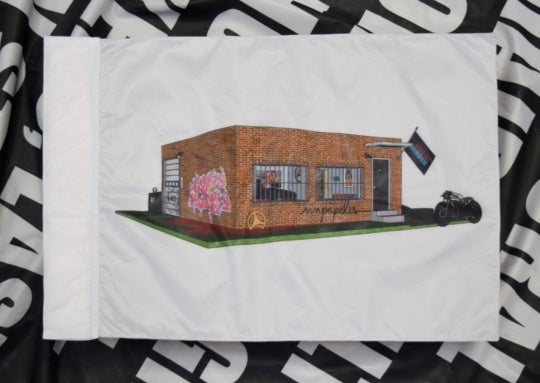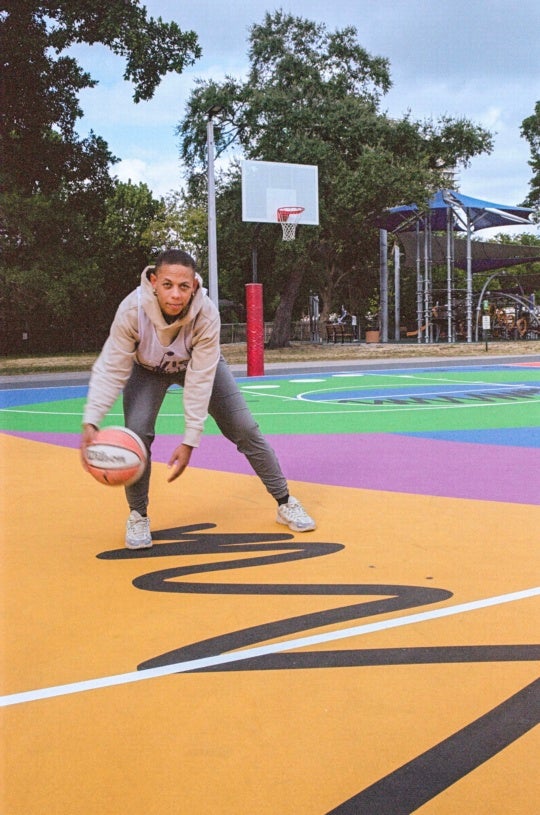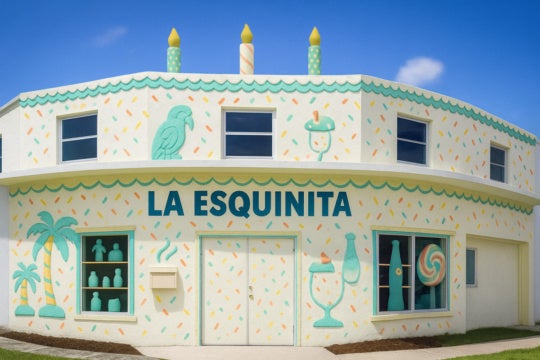Born in the coastal town of Loíza in Puerto Rico, Daniel Lind-Ramos speaks about the area’s rich African history, which influenced traditions celebrated in the town today. Loíza is a playground for the artist to scavenge and collect found materials for his sculptures. Dried coconuts to rusted metal chains adorn his assemblages, reflective of a mindset that values repurposing which can be seen throughout the island. It is also reminiscent of the artist’s own upbringing, as his family were seamstresses and cabinet makers. Similar to the work of his family members, Lind-Ramos sketches and plans before he begins working. The pieces are compiled gradually, like putting a puzzle together.
“How could I talk about the terrible and the sublime at the same time?” says Lind-Ramos as he recounts memories of the devastation brought by Hurricane Maria in 2017. It is a recollection of horror as more than 3,000 citizens died due to the storm, and the lasting damage that remains for residents and the physical landscape.
The assemblages themselves feel akin to altars. Worn sneakers washed up by the sea are tied to immigration stories across the Caribbean, recalling the personal articles of clothing that migrants take with them in order to begin new lives. Repurposed aluminum and copper reflects on the instability of housing on the island, and how not only hurricanes but developers take advantage of under-resourced communities. There’s a musicality and rhythm to the sculptural installations, echoed by the included drums that produce a thunderous sound, mirroring a tropical storm’s auditory qualities.
For Lind-Ramos, the community of Loíza is an extension of his studio. Beyond collecting and repurposing found materials from the street, he celebrates with the town through performances that allow locals to don masks and gowns that are made from recycled materials. As an artist and community gatherer, Lind-Ramos offers a platform for fellow Puerto Ricans to voice their grievances and joys about living on the island.
This film is part of Burnaway’s partnership with Art21, an organization that produces award-winning documentary films about the world’s most groundbreaking contemporary artists. The collaboration intends to deepen an understanding of visual art that hails from the South today.
Related Content

Mira el mar: Reflections on Natalia Lassale-Morillo’s Retiro
Over time, there’s a gentle but perceptible mood shift, particularly in footage shot after Hurricanes Irma and Maria in late 2017. “My mom told me there was a gap between the people we were then and now,” said Natalia, “filled with political revolutions, a pandemic, earthquakes, hurricanes.” In these later scenes, the pair travel through the fog of Borikén’s mountaintops, wade in its waters; Puerto Rico is the film’s third character. The two women transform into a kind of parabola, an intergenerational continuum of synchronous roles. Natalia instructs her mother, “Look at the sea.” They irritate each other. They grow closer.

Luis Gabriel Sanabria’s Vejigantes Celebrate Puerto Rico’s Queer Ecologies
The carnival tradition is rooted in hypermasculine violence. The Ponce and Loiza carnivals that are celebrated today date back to the twelfth century after James Matamoros, known as Saint James, murdered and expelled the Muslim Moors from Spain. The Spaniards celebrated their victory by taking giant cow bladders (vejigas gigantes), drying them out, painting them and adorning their faces with the reconstructed vizard. According to The Bronx Library Center, the bladders were filled with seeds, staking them on top of a stick to toy with pedestrians in the crowd. As the vejigantes hollered and moaned, it was a reminder of Christianity’s defeat over the Moorish “devils,” and an urging back to church as salvation. Today, carnival is a disruption to the rote monotony of that very Christian, colonial ideal, an excuse for revelry and escape.




